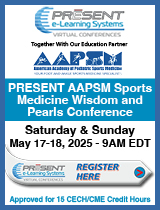|
|
|

|
Search
04/24/2025 David T. Weiss, DPM
Concentration of Dextrose Solution for Prolotherapy? (Brent Rubin, DPM
The effective concentration of Dextrose is 50%
(hyperosmolar).
Mechanism of Action of Dextrose:
1. Localized Inflammatory Response
Dextrose solutions (typically hyperosmolar) act as
an osmotic irritant when injected into entheses,
ligaments, tendons, or joint capsules. This mild
irritation triggers a controlled, localized
inflammatory response.
2. Stimulation of Fibroblast Proliferation
The inflammatory response recruits fibroblasts to
the site of injection.
Fibroblasts are key cells responsible for collagen
synthesis. This process promotes:
o Neocollagenesis (new collagen formation)
o Extracellular matrix remodeling
3. Strengthening of Connective Tissue
Over time, the deposition of new collagen fibers
leads to:
o Thickening and strengthening of ligaments and
tendons
o Improved tensile strength and stability of the
affected area
o Reduction in ligamentous laxity, which is often
implicated in chronic musculoskeletal pain
syndromes
4. Pain Modulation
o Dextrose may have a neuromodulatory effect by
downregulating pain-generating nerve fibers (such
as C-fibers) through alteration of local glucose
concentrations.
o Studies suggest that dextrose may help reduce
neurogenic inflammation and modulate chronic pain
pathways, particularly in cases of tendinopathy or
enthesopathy.
5. Joint Stabilization and Function Restoration
As weakened connective tissues regain structural
integrity, joint mechanics improve, leading to:
o Decreased aberrant movement or microinstability
o Reduction in nociceptive input
o Functional improvement and decreased reliance on
analgesics or anti-inflammatory medications
David T. Weiss, DPM, Richmond, VA
There are no more messages in this thread.
|
| |

|
|







